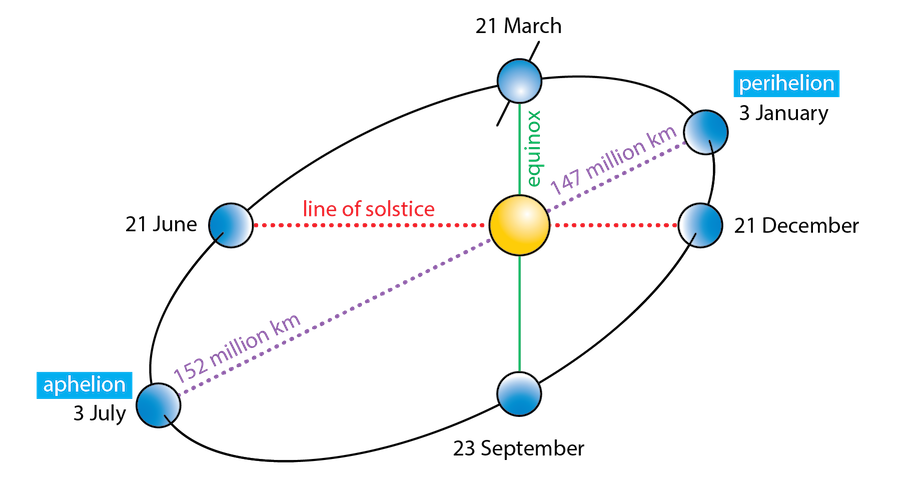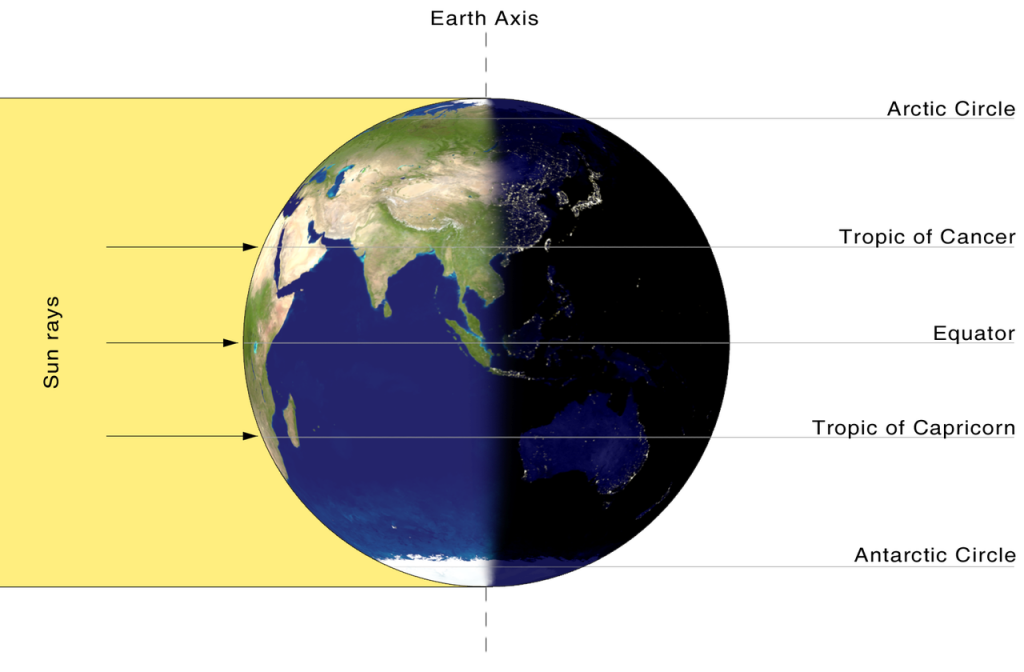Earth’s orbit around the sun

The elliptical orbit of the earth around the sun. The distance between the earth and the sun is not to scale and the earth’s orbit has been greatly exaggerated. Image by Byron Inouye . https://manoa.hawaii.edu/sealearning/media_colorbox/2291/media_original/en
https://spaceplace.nasa.gov/seasons/en/
Equinox
An equinox is an event in which a planet’s subsolar point passes through its Equator. The equinoxes are the only time when both the Northern and Southern Hemisphere experience roughly equal amounts of daytime and nighttime.

https://www.nationalgeographic.org/encyclopedia/equinox/
Solstice
A solstice occurs when the Sun appears to reach its most northerly or southerly excursion relative to the celestial equator on the celestial sphere.

https://scijinks.gov/solstice/
Seasonal Lag
https://www.weatherworksinc.com/temperature-extremes-records-seasonal-lag
Summary seasons
1. Seasons are caused by tilt and aspect of the earth to the sun as we orbit.
2. Tilt causes changes in day length and solar radiation reaching surface
3. Large heat capacity means it takes time to increase earth temperature. Causing a seasonal lag.
4. Local seasonal changes focus on terrain facing the sun.
Day/Night
Diurnal temperature lag

http://kejian1.cmatc.cn/vod/comet/tropical/textbook_2nd_edition/navmenu.php_tab_2_page_6.3.0.htm
You can see that although the sun is highest at noon, the maximum temperature is not reached until afternoon. This is because it takes time for the land and ocean to warm and then, in turn, warm the air. On a calm day, this processes takes longer and a very steep gradient from the ground up can be observed. On windy days the mechanical mixing from turbulence can mix warmth from the ground upwards faster.
Online book from COMET program http://kejian1.cmatc.cn/vod/comet/tropical/textbook_2nd_edition/navmenu.php_tab_2_page_6.3.0.htm
Summary day/night
1. Daily variation in air temperature near the earth’s surface is controlled mainly by the input of energy from the sun and output energy from the surface.
2. On a clear, calm day, surface air warms as long as heat input (sunlight) exceeds heat output (convection and radiated infrared energy).
3. Surface cools at night as long as heat output exceeds input.
4. Coldest air is normally found at the surface, for the ground at night cools more quickly than the air above.
5. Greatest daily variation in air temperature occurs at the earth’s surface